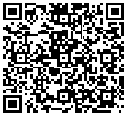QR Application
" We simplify complexities "
Inteinno QR
A QR code is a type of barcode that can hold more information that can be scanned through any smart phone. The “QR” stands for “quick response,” a reference to the speed at which the large amounts of information they contain can be decoded by scanners. QR codes have the potential to deliver similar content with very little to no overhead cost. They can be scanned by a range of devices, increasing the audience which can access them. QR codes are two-dimensional bar codes that can contain any alphanumeric text and often feature URLs that direct users to sites where they can learn about an object or place (a practice known as “mobile tagging”).
How does it work? Data can be translated into a QR code by any QR generator, many of which are available free online. Users simply enter the data to be translated, and the generator produces the code, which can then be displayed electronically or in printed format. Decoding the information can be done with any mobile camera phone that has a QR reader, which is freely available online for most devices. Once the software is loaded, a user points the cell phone camera toward the code and scans it. The software interprets the code, and the cell phone will either display the text or ask for permission to launch a browser to display the specified web page.
Where is it going? QR codes can store quite complex information in a small matrix. As awareness grows about how useful they are, we can expect to see them in more public venues. Commercial packaging will display codes with detailed nutritional information or links to websites where users can play the latest product-associated game or register for updates or coupons.
Three things are required in order to successfully decode a QR code: a smartphone, a QR code scanning application, and a connection to the Internet (either through the phone’s data plan or over a site-generated wireless network). The Phone In order to use QR codes, you need to have a cell phone capable of running decoding software. These phones can download and install applications, can access the Internet, and have cameras. These types of phones are loosely referred to as “smartphones”; the most common examples are iPhones, Blackberries and Android phones. There are a number of applications which can be used to decode a QR code, all of which work in similar pattern. The information gets encoded according to ISO/IEC 18004:2006 by a QR generator The benefit of relying on a data connection is that it is automatic: visitors do not have to set up or configure anything, and it is accessible almost anywhere you can make or receive a phone call.

